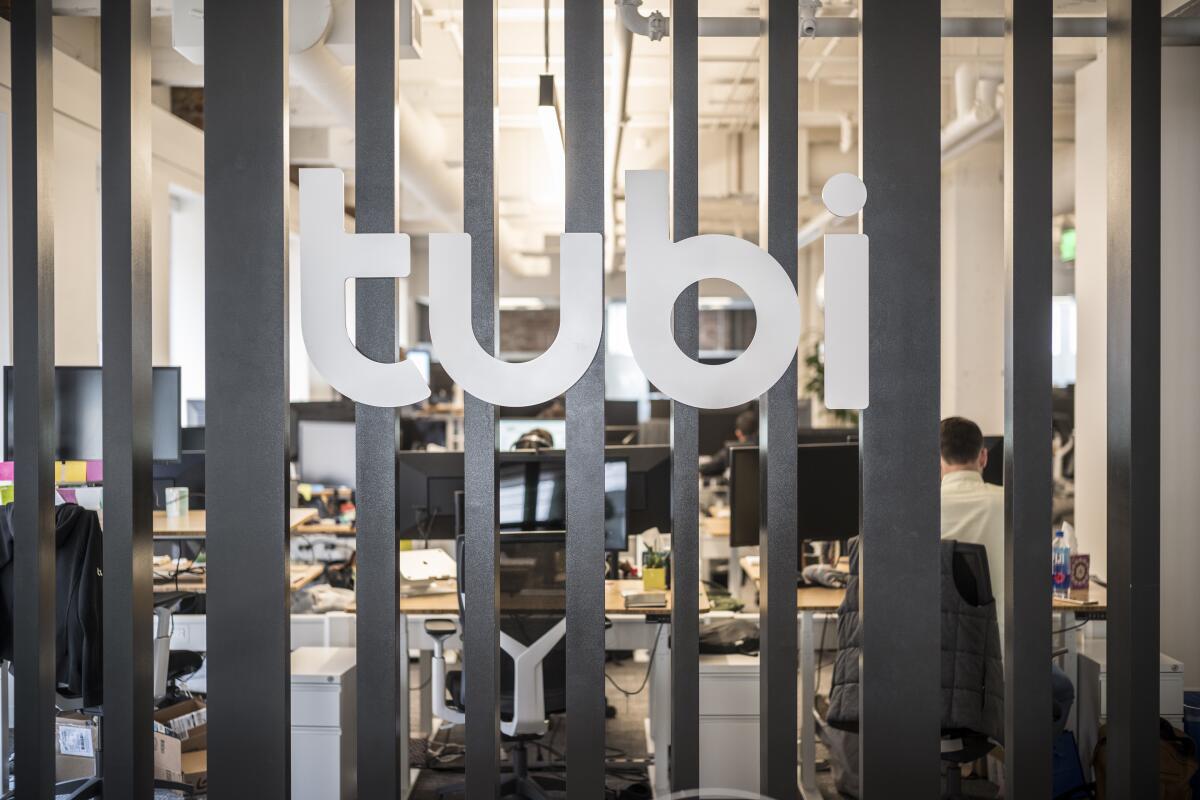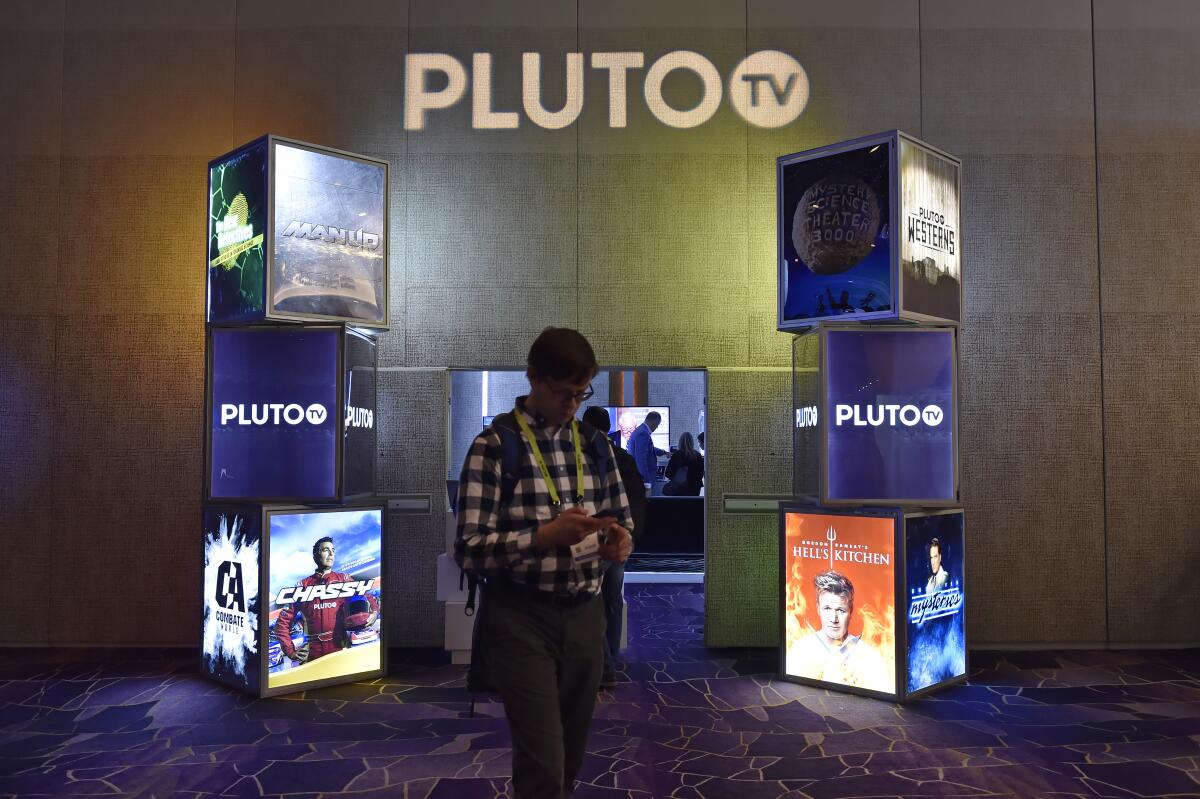In a crowded market, smaller streaming services must stand out — or perish

San Francisco — This story is part of a Times series on the great streaming wars of 2019. Click here to read the rest of our coverage of Disney +, Apple TV +, HBOMax and more.
Fifty miles from Netflix’s headquarters, entrepreneur Farhad Massoudi is building an alternative to the country’s most popular subscription streaming service.
His company, Tubi, offers a library of shows and movies similar to Netflix, for free. With no monthly subscription fee for users, Tubi is one of the nation’s largest ad-supported streaming services, used by more than 20 million people each month.
Over the past year, its library has doubled to more than 15,000 titles and so has its staff, now about 180. It has outgrown its headquarters that once took up a floor inside a San Francisco building. By next fall, Tubi’s home office will have four floors to make room for additional engineers, product managers and other employees.
“We’re the king of comfort TV,” Massoudi, the 38-year-old chief executive of Tubi, said in an interview. “Regardless of how the world is shaping, we clearly are doing better both in terms of volume and the quality of content.”

Tubi is part of a wave of streaming services that has flooded the U.S. market; some of them cater to the general masses and others are specifically focused on genres like horror or anime. Over the last five years, the number of services that stream video over the internet has more than doubled to 271, according to research firm Parks Associates.
But the entry of Disney, Apple and WarnerMedia into the streaming wars could spell trouble for a number of smaller niche players while creating opportunities for others. The number of streamers is expected to decline in the next several years, as services compete for consumer attention and wallets, putting more pressure on smaller players that may lack the cash reserves to spend on content.
“They can’t all survive in this type of environment,” said Brahm Eiley, president of the Convergence Research Group, a British Columbia firm that tracks streaming.
Consumers will be faced with more choices than ever and may become more critical over how much money they spend on streaming services that charge a subscription. New entrants to the market have priced their services much lower than some of the incumbents — Disney+ will charge $6.99 a month and Apple TV+ will charge $4.99 a month. Those are similar to prices that niche streaming services already charge, like Shudder, a $5.99-a-month streaming service owned by AMC Networks that caters to horror suspense and thriller fans.
Eunice Shin, a partner at global consultancy Prophet, said some niche services “are somewhat in defense mode.” Already, some streaming services have shut down, like Korean drama-focused DramaFever, which was hurt by Netflix’s increased investment in Korean content, Shin said.
“They live in fear of any one of the larger streamers adding more of a budget toward that genre and creating a challenge for them,” Shin said.
But Miguel Penella, AMC Networks’ president of global direct-to-consumer, said it’s too early to say whether the cost of content will increase for his company.
He believes Shudder complements other streaming services and its focus on horror appeals to passionate fans. Shudder offers originals such as horror anthology series “Creepshow” and can go very deep into the genre, with about 2,000 hours of programming, Penella said.
“We believe that we can super-serve a distinct interest in the marketplace,” Penella said. “Every program on Shudder is for you. You don’t have to spend time looking around for programs that may not be for you.”
AMC Networks executives believe that there is huge growth potential for Shudder because the horror genre is easier to understand in different languages and cultures. Shudder, and three other genre-specific streaming services owned by AMC, are projected to reach more than 2 million subscribers by the end of the year.
Massoudi also believes a new rush of streamers will help his business, not hurt it. The new entrants will push more people to end their cable subscriptions and discover free, ad-supported services like Tubi, he said.

“Subscription fatigue is a real problem, and I think acceleration of (subscription video-on-demand) services means the rapid decline for the traditional TV business — that’s where we come in,” Tubi’s Massoudi said.
A Tubi spokesman declined to disclose the company’s finances.
Tubi, which launched as a free service in 2014, licenses all of the movies and shows in its library. It doesn’t go after the top 1% of licensed shows, such as “Friends” or “The Office,” a strategy that lets Tubi avoid bidding wars with other services like Netflix. Tubi also has no plans to fund its own original productions.
“The heavy focus on originals is going to be a part of the strategy for most of these (other subscription streaming) services,” Massoudi said. “We see a lot of value and viewership in the bottom 99%” of licensed programs, he added.
Those include shows that have already drawn big audiences on TV, like reality dating show “Bachelor in Paradise” (from 2018), “The Bachelorette (from 2017) and the sitcom “Anger Management.”
Tubi streams some movies that are missing on Netflix, such as the 2010 thriller “Shutter Island” starring Leonardo DiCaprio and the 2007 critically acclaimed film “No Country for Old Men.” Tubi has raised $35 million and has licensing deals with MGM and Lionsgate, which have also invested in the company.
Executives at Pluto TV believe it also will pick up more customers because its streaming service is free and supported by ads.
The years-old streaming skirmish has now become a pitched battle — for talent, for money, for your time and your eyes— as Apple, Disney, HBO and NBC to enter the fray with major subscription services.
With 18 million monthly viewers, Pluto TV has more than 200 channels, including a Cribs MTV channel constantly showing episodes of a program touring mansions of celebrities. But unlike traditional TV, Pluto TV airs fewer ads. Every hour, Pluto TV airs eight to 12 minutes of ads — half of what’s on traditional TV, the company said.
“We’re trading on an established, long-standing massive consumer habit of being entertained by television,” said CEO Tom Ryan, adding viewers don’t mind watching ads in exchange for a premium television service. “There is a limit to the number of subscriptions they are willing to pay for.”
Viacom purchased Pluto TV earlier this year for $340 million, an acquisition that would boost its advertising efforts and increase its presence in streaming.
Consumers likely will mix and match their video-on-demand services. A quarter of U.S. broadband households use three or more services to stream video over the internet, according to Parks Associates.
“Consumers are more likely today to have multiple subscriptions and also use ad-based streaming services,” said Brett Sappington, a senior research director and principal analyst at Parks Associates. “They have this whole set, this portfolio of content that they watch.”
Some services that charge a subscription fee are already making changes to better compete.
Crunchyroll, a San Francisco-based anime streaming service, said it has seen the cost of licensing anime content increase in recent years, reflecting competition from Netflix and other platforms. Every quarter, Crunchyroll rolls out as many as 30 new series from Japan.
“(With) everything that is happening in the content space today, prices are going up just because there are more buyers,” said Eric Berman, Crunchyroll’s head of business development.
Crunchyroll has more than 12 million monthly active users, including 2 million subscribers who pay $7.99 a month to watch ad-free anime shows and movies. The streaming platform is owned by Otter Media, a division of WarnerMedia. Crunchyroll said it will partner on content with WarnerMedia’s streaming service launching next year, HBO Max, but declined to discuss details.
Founded in 2006, Crunchyroll offers its licensing partners more than just video services. The company also holds an annual expo that draws tens of thousands of fans and sells merchandise on its site. Last year, Crunchyroll began offering games that draw inspiration from anime on its platform.
Crunchyroll also is making original productions, working with cocreators in Japan and using data on its anime fans to identify stories that might appeal to them.
“In the future, it’s going to be a brand that stands for something that is fully encompassing of everything that an anime fan holds true, dear and near to their heart,” Berman said.
More to Read
Inside the business of entertainment
The Wide Shot brings you news, analysis and insights on everything from streaming wars to production — and what it all means for the future.
You may occasionally receive promotional content from the Los Angeles Times.













